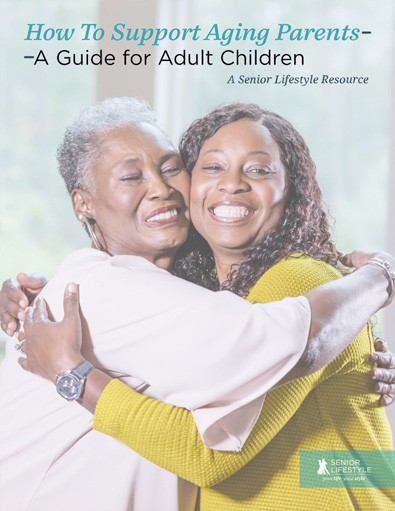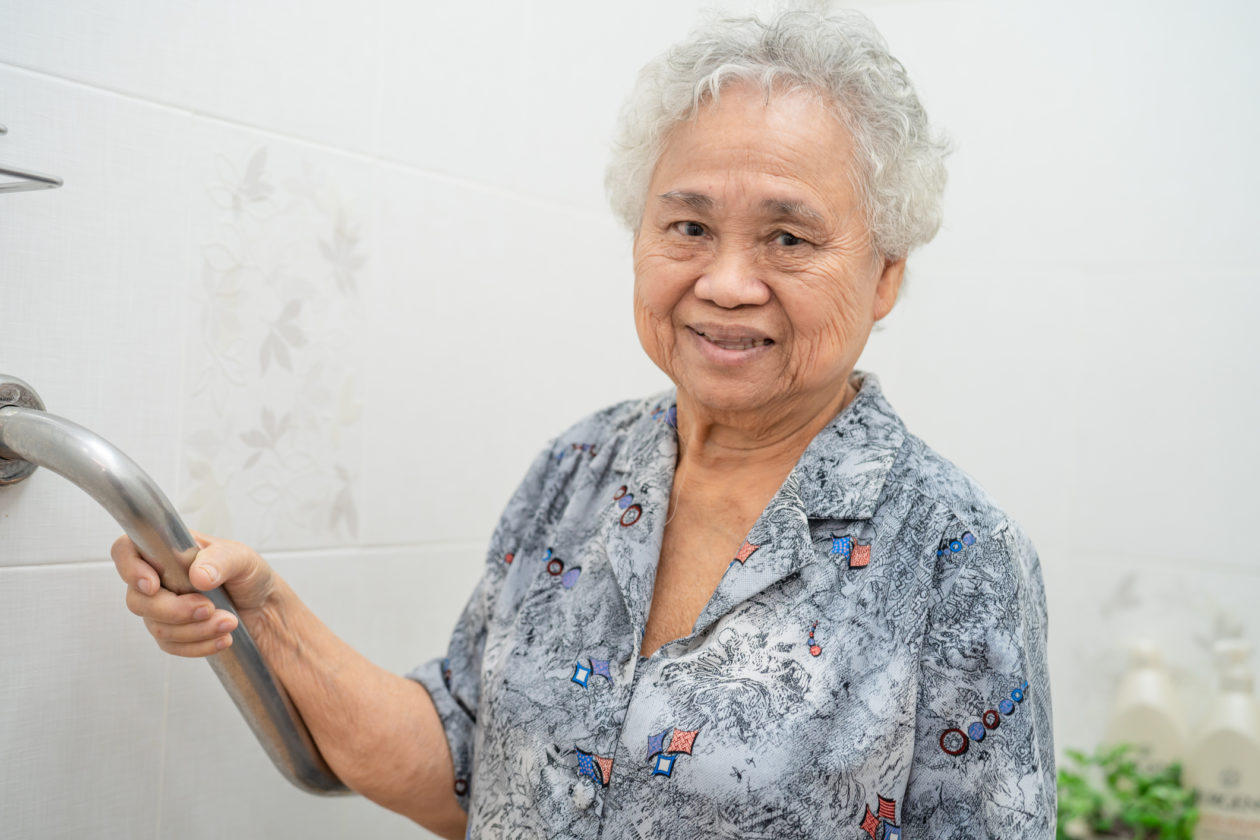Incontinence is common in older people and can be stressful when it’s not under control or being treated. Many people who are dealing with incontinence have to plan around it, like having supplies with them or always scouting for the nearest bathroom.
Many people don’t talk about having these symptoms because it is embarrassing or they think nothing can be done. But being incontinent is not something to just tolerate.
Incontinence in older adults can often be controlled or stopped altogether, so it shouldn’t have to be suffered in silence. Learn more about this senior care issue, its causes and how it can be treated to make life easier and more carefree.
What is Incontinence?
Incontinence is a common condition caused by problems with the muscles and nerves that help the bladder or bowels hold or release waste. Accidental urinary or bowel leakage is called incontinence.
There are many factors involved in incontinence. Among the most common, according to MedlinePlus, are:
- Being female, especially after pregnancy, childbirth or menopause
- Being male with prostate problems
- Being a smoker
- Having a structural birth defect of the urinary tract.
- Having certain health problems, such as diabetes, obesity or long-lasting constipation
- Being older
More than 50% of older Americans deal with incontinence, according to a study cited by WebMD. About 25% have moderate to severe urinary leakage, and 8% have moderate to severe bowel leakage.

Download How to Support Aging Parents: A Guide for Adult Children
From emotional support and financial concerns, to legal considerations and housing options, there’s a lot to consider when you’re caring for aging parents. This free guide provides research, insights and resources for adults caring for parents.
Download the GuideWhat Types of Incontinence do Seniors Suffer?
Urinary incontinence is the most common type in seniors. According to the National Association for Continence, more than 25 million senior Americans experience bladder leakage every day. That’s about 50% of senior women and 25% of senior men, according to WebMD.
Here are some of the most common types, according to the National Institute on Aging (NIA):
- Functional incontinence – This occurs in older people who otherwise have normal bladder control. They may have a problem getting to a toilet in time because of arthritis or other conditions that make moving difficult.
- Overflow incontinence – This is when small amounts of urine leak from a bladder that is always full. For men, an enlarged prostate can block the urethra, which can prevent complete emptying of the bladder. Other conductions, such as diabetes and spinal cord injuries, can contribute to this incontinence.
- Stress incontinence – This occurs when urine leaks as pressure is put on the bladder. Coughing, exercise, laughing, lifting or sneezing can trigger the leak. It’s fairly common in younger and middle-aged women, sometimes as an aftereffect of childbirth. It also may occur around menopause.
- Urge incontinence – This can happen when a sudden need to urinate occurs and a person can’t hold on long enough to get to a toilet. It can be a problem for seniors who have Alzheimer’s disease, diabetes, multiple sclerosis or Parkinson’s disease, or who have had a stroke.
What Causes Incontinence in Seniors?
Incontinence is not just something that happens with age. There are many things that lead to incontinence in older people. Among the causes of senior incontinence are:
- Diseases – Some conditions such as arthritis can make it difficult to get to the bathroom in time.
- Infections – Urinary tract infections or vaginal infections or irritation can lead to mild incontinence.
- Medication – Some medications for other conditions can cause temporary bladder control problems.
- Nerve damage – People may lose control of the bladder because of diabetes, multiple sclerosis or Parkinson’s disease.
- Pelvic organ prolapse – The bladder and urethra may not work normally when pelvic organs, such as the bladder, rectum or uterus, shift out of place. This may cause urine to leak.
- Prostate problems – Men can suffer from an enlarged prostate gland, either because of prostatitis, which is a painful inflammation of the prostate gland, or benign prostate hyperplasia, which is an age-related enlarging of the prostate.
- Weakened or overactive muscles – When pelvic muscles are too weak or too active, incontinence can occur. If they’re too weak, seniors can be unable to hold back urine or a bowel movement. If they’re too active, there may be a strong urge to go to the bathroom, causing leakage.
How is Incontinence Prevented and Treated?
There are many ways to prevent or treat this condition, which can free you from the concern of incontinence. Here are a few of the ways incontinence can be addressed, according to the NIA:
Ways to Prevent Incontinence
Exercises and Training
- Pelvic muscle exercises – Sometimes known as Kegel exercises, these can strengthen muscles in the pelvic floor. These muscles support the bladder and can help hold urine back to avoid leaks.
- Timed voiding – Scheduling time to urinate can help control the bladder. By planning a time for the bathroom, a body can adjust to a schedule. Eventually, more time can be extended between bathroom visits.
- Urgency suppression – Control strong urges to urinate by distracting yourself, taking relaxing breaths, holding still or flexing the muscles of the pelvic floor. Do these until a trip to the toilet can be made.
Behavioral and Lifestyle Changes
There are a number of changes you can make to help with control:
- Avoiding lifting heavy objects
- Limit drinks before bedtime
- Lose weight
- Prevent constipation
- Quit alcohol and smoking
- Wear bladder control products
Ways to Treat Incontinence
Medical Treatments
The NIA lists these treatments that may help:
- Biofeedback – This uses sensors to make you aware of signals from your body. Using biofeedback may help you regain control over the muscles in your bladder and urethra.
- Bulking agents – These can be used to help close the bladder opening. Doctors inject a paste or gel that thickens the area surrounding the urethra. This treatment may need to be repeated.
- Electrical nerve stimulation – A mild electric current can be sent to the nerves around the bladder to help your bladder’s reflexes and to control urination.
- Medical devices – Such instruments as catheters to drain urine from your bladder, urethral inserts to prevent leakage and a vaginal pessary ring to provide pressure to prevent leakage may be used.
- Medications – Bladder control problems sometimes can be addressed with pills, liquids or patches. There are risks, so consult a doctor to see what might work best.
- Surgery – Changing the position of the bladder or clearing a blockage due to an enlarged prostate can sometimes improve or cure incontinence.
- Vaginal estrogen cream – This low-dose hormone, applied to the vaginal walls and urethral tissue, may help with relieving stress or urge incontinence.
Products and Devices
There are many products available to help control incontinence. Among these:
- Catheters and penile sheaths
- Moisture-absorbing pads and pants
- Protection for beds and chairs
- Skincare and hygiene products
- Specially adapted clothing and swimwear
Many of these are available in drugstores or can be ordered discreetly online.
Special Alzheimer’s Concerns
Seniors in the later stages of Alzheimer’s disease often have urinary incontinence problems. This can be because of forgetting to go to the bathroom, not being able to find the toilet, or not realizing they need to urinate.
According to the NIA, here are a few things you can do to help those with Alzheimer’s:
- Avoid giving them caffeinated coffee, sodas and tea, which may increase urination. But be sure they’re getting enough water, which is still important for hydration and overall health.
- Keep walkways clear and the bathroom clutter-free, and keep a light on at all times.
- Provide regular bathroom breaks.
- Use underwear for them that is easy to get on and off, and absorbent briefs or underwear for trips away from home.
Find a Healthy Environment at a Senior Community
Senior Lifestyle communities provide for residents’ particular needs, whether that means incontinence, cognitive impairments or other issues of aging. Our Levels of Care options are designed to give residents what they need as they age.
Find out more about Senior Lifestyle by contacting us today.

